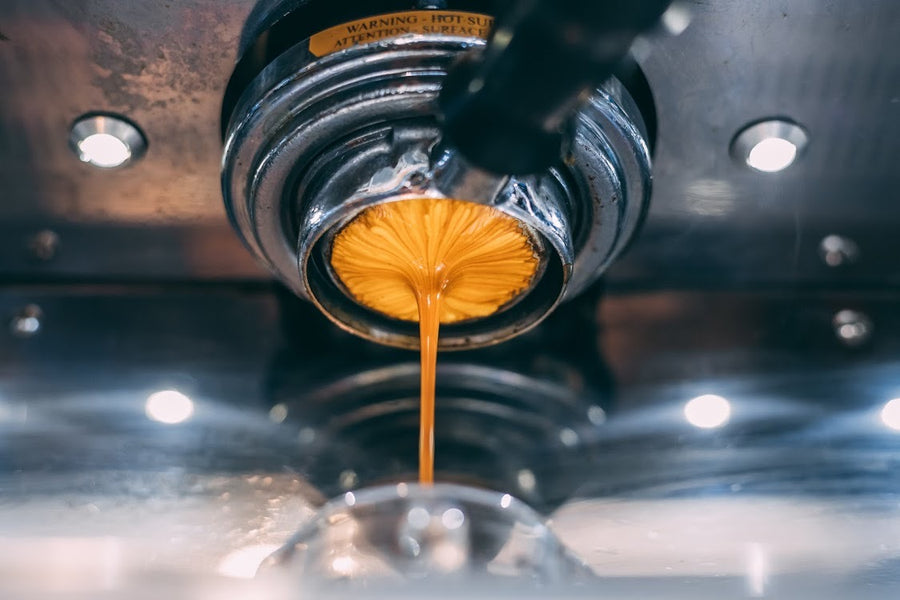Why SOE Single Origin Espresso Is Popular Among Baristas
Why SOE Single Origin Espresso Is Popular Among Baristas
Blog Article
Coffee Beans Uncovered: Finding the Tricks of Espresso and Blended Coffee Beans
When you consider coffee, what comes to mind? Is it the abundant fragrance of espresso or the intricacy of a well-crafted blend? Comprehending the nuances of coffee beans can transform your experience. Each variety, from Arabica to Robusta, holds its own secrets. As you explore better, you'll reveal exactly how these beans form flavors and impact sustainability. What might you find about your following cup?
The Origins of Espresso: A Historical Perspective
Although espresso is now a staple in coffee society worldwide, its origins map back to the early 20th century in Italy. In 1901, Luigi Bezzera patented the very first coffee equipment, aiming to make coffee faster than conventional approaches.
Understanding Coffee Beans: Characteristics and ranges
When you think of espresso, it's necessary to acknowledge the various bean ranges and their distinct flavors. Each kind brings a distinctive personality to your mug, affected by factors like roast levels. Recognizing these aspects can raise your espresso experience considerably.
Coffee Bean Varieties
As you explore the world of espresso, you'll quickly uncover that not all beans are created equivalent; each selection brings its very own one-of-a-kind tastes and qualities to your cup. Arabica beans are recognized for their smooth, nuanced flavors and lower high levels of caffeine content, making them a preferred amongst coffee connoisseurs. Each selection provides something various, so experimenting will certainly help you find your perfect coffee.
Flavor Profiles Discussed
Recognizing the taste profiles of various espresso beans can raise your coffee experience. Each bean range supplies unique characteristics that influence mouthfeel, taste, and scent. Arabica beans frequently provide a sweeter, more complex flavor with hints of fruit and flower notes, while Robusta beans tend to be bolder, with natural and nutty undertones.
When you check out single-origin beans, you may uncover unique regional flavors-- Main American beans may be bright and citrusy, whereas Italian blends usually provide abundant, chocolatey notes.
Roast Levels Effect
Roast degrees play a vital function in forming the flavor and scent of espresso beans, influencing your general coffee experience. Comprehending these roast levels helps you select the coffee that matches your taste preferences. Experimenting with various roasts can lead to wonderful discoveries, boosting your recognition for espresso.
The Art of Blending: What Makes Blended Coffee Distinct
What makes blended coffee so interesting? You can experiment with different combinations to enhance level of acidity, sweet taste, and body, resulting in a mixture that's richer and much more complicated than a single-origin coffee.
And also, blending can aid keep uniformity, supplying a trusted flavor experience no matter of seasonal variants in beans. Whether you're a home or a barista maker, mastering the art of mixing opens up a globe of creative thinking and taste possibilities, making your coffee experience truly distinct.
Flavor Accounts: Tasting Notes of Espresso vs. Blended Coffee
Blended coffee offers a world of taste opportunities, but when it comes to coffee, you're looking at an extra focused experience. Espresso commonly showcases bold, rich flavors with a thicker mouthfeel.
On the other hand, combined coffee provides an intricate tapestry of flavors. You can explore a selection of sampling notes, from sweet and nutty to flower and fruity. Each blend can provide something one-of-a-kind, frequently incorporating beans from different regions to develop a well balanced profile.
While espresso provides a strike, blended coffee invites you to savor the nuances. Whether you choose the robust strength of coffee or the intricate flavors of combined coffee, each mug tells its very own tale, waiting on you to uncover.
Developing Techniques: Perfecting Your Espresso Shot
To accomplish the ideal espresso shot, understanding the brewing techniques is vital, as even minor adjustments can significantly impact the flavor and top quality. Start by using fresh, top quality coffee beans; grind them prior to developing for optimum taste. Go for a fine grind, concerning the uniformity of common salt, to assure perfect removal.
Next, pay attention to your water temperature; it must be between 195 ° F to 205 ° F. Too too cold or warm can spoil your shot. Use concerning 18-20 grams of coffee for a double shot, and tamp it uniformly with strong stress to create an uniform puck.
A longer extraction can lead to resentment, while too short can result in sour tastes. Exercise these methods constantly, and you'll refine your skills, attaining that rich, robust espresso shot you crave.
The Duty of Roast Levels in Espresso and Blended Coffee
After mastering the brewing methods for coffee, it's time to ponder exactly how roast levels influence the flavor profile of your coffee. The roast level can drastically alter your espresso's body, scent, and preference. Light roasts often tend to highlight the coffee's beginning, supplying brilliant level of acidity and fruity notes, while tool roasts equilibrium acidity and sweet taste, developing a well-rounded taste. Dark roasts, on the other hand, bring out bold, rich flavors with reduced level of acidity, often producing chocolate or smoky touches.

Exploring Sustainability: Ethical Sourcing of Coffee Beans
When you choose coffee, you're not just choosing a taste; you're choosing about the influence on farmers and the setting. Comprehending Fair Profession methods, organic farming techniques, and qualification criteria can assist you sustain sustainable coffee sourcing. Let's explore just how these variables contribute to an extra moral coffee experience.
Fair Profession Practices
Fair Profession practices play a crucial duty in ensuring that coffee beans are sourced fairly and sustainably. When you select Fair Trade coffee, you support farmers who get fair earnings and job in safe conditions. By deciding for Fair Profession brands, you're not just taking pleasure in an abundant cup of coffee; you're making a favorable effect on the lives of those that grow it.
Chemical-free Farming Methods
As you discover the world of honest coffee sourcing, organic farming techniques emerge as a crucial part of sustainability. Furthermore, it often leads to more powerful, much healthier coffee plants, resulting in richer flavors in your cup. When you opt for natural coffee, you're making a mindful selection that benefits both the earth and your taste buds.
Certification Requirements Explained
Understanding accreditation criteria is essential for any individual interested in ethically sourced coffee. These standards, such as Fair Profession, Rainforest Partnership, and USDA Organic, guarantee that coffee is grown under lasting practices. You sustain farmers who stick to moral labor techniques and ecological security. when you pick certified coffee.
Fair Profession accreditation focuses on providing fair incomes and working problems, while Jungle Alliance highlights biodiversity and ecosystem preservation. USDA Organic assures that no synthetic fertilizers or chemicals are made use of. By familiarizing yourself with these qualifications, you can make educated options that line up with your worths. Following time you're at your neighborhood café or food store, search for these labels, and really feel good knowing your coffee purchase favorably affects areas and the atmosphere.
Often Asked Concerns


Just How Does Elevation Impact the Development of Coffee Beans?
Elevation influences coffee bean growth by affecting temperature and climate. Greater elevations commonly create denser beans with more complex tastes, while reduced altitudes can lead to faster growth however less delicious results. You'll taste the distinction!
What's the Difference Between Arabica and Robusta Beans?
Arabica beans are sweeter and more intricate, while Robusta beans have a more powerful, harsher taste with higher caffeine content. You'll locate Arabica liked for specialized coffees, whereas Robusta's typically made use of in immediate coffee and coffee blends.
Can Coffee Beans Go Poor or Shed Taste With Time?
Yes, coffee beans can spoil and lose taste in time. If you save them incorrectly or keep them as well long, they'll come to be stagnant. Constantly keep your beans in an airtight container away from light and wetness.
What Are the Health And Wellness Conveniences of Drinking Espresso?
Drinking coffee increases your power, improves mental clarity, and may reduce the danger of certain conditions. It's abundant in anti-oxidants, supports metabolic process, and can enhance mood, making it Single Origin Espresso an advantageous selection for your day-to-day routine.
Just How Does Water Top Quality Impact Coffee Removal?
Water quality significantly affects espresso extraction. It affects the solubility of flavors and oils, affecting preference and fragrance. Making use of filtered water can improve your coffee, ensuring a pleasurable and balanced cup every single time you brew.
Coffee Beans Uncovered: Finding the Tricks of Coffee and Blended Coffee Beans.
Recognizing the taste profiles of different coffee beans can elevate your coffee experience.Roast degrees play a necessary duty in forming the flavor and aroma of espresso beans, influencing your total coffee experience (SOE).Blended coffee uses a world of taste opportunities, yet when it comes to espresso, you're looking at a much more concentrated experience.After mastering the developing methods for coffee, it's time to consider how roast levels influence the taste profile of your coffee
Report this page